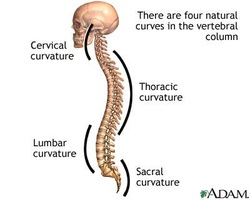To Vaccinate or not to Vaccinate?
11/27/2013
By: Albert Huang, DC Vaccination is a very controversial topic as it affects everyone in our health care system. Vaccinating our bodies with foreign toxic substances is not natural and can affect our immune and nervous systems in many negative ways. Vaccines are filled with numerous harmful substances such as aluminum phosphate/ hydroxide, mercury, formaldehyde, antibiotics, thimerosol, monosodium glutamate, and ammonia sulfate to name a few. Side effect outbreaks are very common and can range from mild symptoms to severe consequences such as permanent lifetime disability or death. Big pharmaceutical companies are money hungry and will turn a blind eye to make a profit. We are living in a sick care system. We have survived and evolved over 200,000 years without vaccines; is it necessary to be injected with 49 doses of 14 vaccines before age 6? Ask some questions, be proactive in your health, get educated, and take responsibility over what you put into your body. Interesting documentary to watch: Silent Epidemic; The Untold Story of Vaccines Movie dire If you like to read, check out this article by by Dr. Russel L. Blaylock, M.D. "The Truth Behind the Vaccine Cover-up"
2 Comments
By: Albert Huang, DC We all have heard the saying, 'don't judge a book by its cover'. Unfortunately, when it comes to physical appearance, first impressions mean everything. Statistics say that we critique and make impressions of someone within the first 7 seconds of meeting them. The way we present ourselves can influence how we are perceived by others. Body language and posture can articulate personal feelings, emotions, and physical wellbeing without a word being said. It has been shown that 55% of effective communication is articulated through body language, 38% via vocals, and 7% with words. Successful leaders have strong command in body language: a presence that reflects confidence, competence, and charisma. One medical study in Colorado, noted that people with poor posture at work reported lower energy levels leading to lethargy and reduced productivity, and that the greatest potential challenge to posture during this age of technology is sitting and working at a computer. Bad posture affects nervous system function and reduces performance output by altering spinal alignment and nerve signalling. A small, inwardly, hunched over posture articulates weakness and uncertainty whereas a tall, open, expansive posture boasts confidence and power. Making an effort to improve your posture will lead to many positive outcomes such as better body mechanics, increased energy, awareness, and self-assurance. Tune into your mind and body; show up for success.  What are the Fundamentals of Good posture? In order to improve posture, we need to establish ideal positioning and best mechanics. Our spine has 4 natural curves, a cervical lordosis, a thoracic kyphosis, a lumbar lordosis, and a small sacral kyphosis. These curves develop during childhood and are natural adaptations of being bi-pedal creatures. The spinal curves provide architectural strength and support to the spine. These curves act like a 'spring' to distribute vertical pressures on the spine and balance body weight. If the spine were absolutely straight, it would be more susceptible to buckle under compressive forces. Simple procedures to maintain your spinal curves include keeping your head centered over your body away from an anterior head carriage position. Keep this in mind especially when studying or working in front of a computer as these tasks cause the head to drift anteriorly. A simple exercise to keep the neck in proper position is the 'neck retraction exercise'. Simply contract your posterior neck muscles and tuck your chin in and backwards. Hold for 15-20 seconds - repeat daily. When standing or sitting, avoid prolonged slouching positions. Maintain an erect posture to preserve the natural lumbar curve to better absorb compressive loads. Slouching places strain on the posterior elements of the spine, compressing the vertebral discs and tensioning the spinal ligaments and muscles. Sustaining this constant pressured posture leads to symptoms of pain and an increased risk of injury. The third area to focus on is to keep our shoulders (scapulas) slightly pulled back (retracted), away from anterior forward rounding. This ensures optimal alignment of the glenohumeral joint to limit tension in the surrounding shoulder muscles and articulation. Adopting this retracted-neutral shoulder position also opens up the thorax to promote greater chest expansion during inspiration. It also reduces the likelihood of impingement related issues in the shoulders. With this said, these are all general recommendations to follow. There is no such thing as perfect posture! The best position is one that is in continual motion. Movement is postures best remedy. Body language speaks a thousand words, so get in touch with your body and strike the best pose you want to be judged for. How often should I receive treatment?
11/11/2013
 As a massage therapist, one of the most frequently asked questions I hear in my practice, is how often should I receive treatment? While I would love to say that you should be coming in every day for massage, that really is just my wishful thinking. In reality, this question is not quite as straightforward as we would like it to be. Everyone's issues are slightly different, and we all react differently. Most often, we can make a significant changes within the first treatment, but usually we are not able to get the whole problem. There is rarely a one time cure and additional treatments and recovery time is needed. This is especially true of the chronic pain; think about how long it took you to get into that state, and ask yourself it seems reasonable to expect it to be fixed immediately. The answer is no. When small problems get left untreated they can turn chronic and accumulate until the tipping point... The proverbial feather that broke the camel's back. In this case, I usually tell my clients that in order to make a significant improvement, there should be about 3 to 4 massages close together. This can be 1-2 times a week. In some cases, co-intervention with a chiropractic or acupuncture treatments can expedite the healing process. The key is to be consistent with treatments and avoid falling into old habits of poor posture, sedentary behaviour, and stressful situations. By placing the treatments closer together, we are able make more steady progress. After this, I always suggest a maintenance program in order to keep things under control, thereby decreasing the likelihood of these acute problems happening again. Movember goes Platinum!!
11/7/2013
 During the month of November, when you donate a loonie at the clinic, we will match and contribute another dollar on your behalf. Movember’s vision is to have an everlasting impact on the face of men’s health. During November each year, Movember is responsible for the sprouting of millions of moustaches around the world. Through the power of the moustache, vital funds and awareness are raised to combat prostate and testicular cancer and mental health challenges. Join us in our fundraising campaign to support Movember and men's health! |
AuthorPosts inspired by the team at Platinum Health & Wellness. Archives
June 2025
Categories
All
|
|
 RSS Feed
RSS Feed